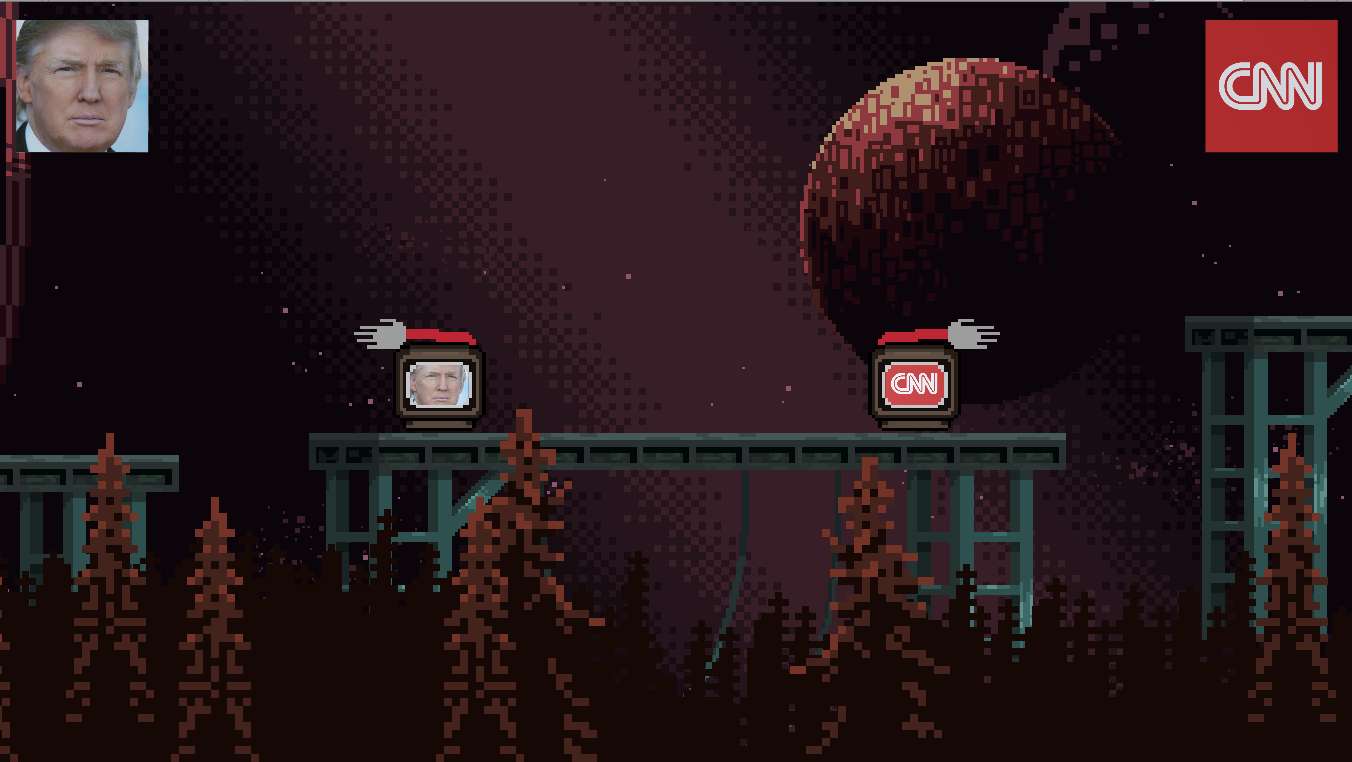Fight Twitter - Slapstick Twitter Game

Overview
Fight Twitter is a small game that allows you to pick any Twitter user as a fighter. It was developed as part of a 12 hour hackathon by me and a teammate, it includes hand-drawn animations and and original soundtrack created by me.
Concept
The concept was created when we decided we wanted to create an application that mixed Twitter data with a game. One of the most amusing aspects of Twitter is the seemingly constant arguing happening in real time, which we wanted to give life to. This project would serve as a means of settling fights between users. The idea was that the game’s Twitter account would post the results of the games and mention two rivals by name. However, our team would have needed another 12 hours to achieve anything more. The finalised concept was a fighting game where users had to push each other off moving platforms to win, using only slapping.
Coding
We started coding immediately, my fellow teammate Josh Gabrel starting a new nity project, grabbing free Assets from Unity’s Asset Store. I started researching scripts for Twitter, to extract information and control an account. The script I wrote would extract and convert a Twitter user’s avatar into an image we could render in the game. Once the game’s setting was set to an “abandoned industrial location in space”, the character animation started. Josh drew an old TV with a swatter-hand violently slapping frame-by-frame. Meanwhile, I worked on producing the soundtrack for the menu, the fight, and the sound effects.
Arriving at the end of the event, we stuck everything together combining menu transitions with Twitter scripts, and fighting with sound effects and music. We reserved some extra time to fix bugs and make sure all actions happened smoothly.
Final product
The final product was a short, fun game that many other hackathon teams came to play, the Twitter aspect created an interest in people as they were excited to try out this personalised touch to their character. Feedback was overwhelmingly positive, most of which was directed towards the polished aspect of the game. Not only did the silly slapping animations combined to real-life Twitter users create this slapstick atmosphere, but the playability and user experience was praised. The testers thought the game had serious effort put in with the fiddly physics and fitting music.
Watch the video demo below:
